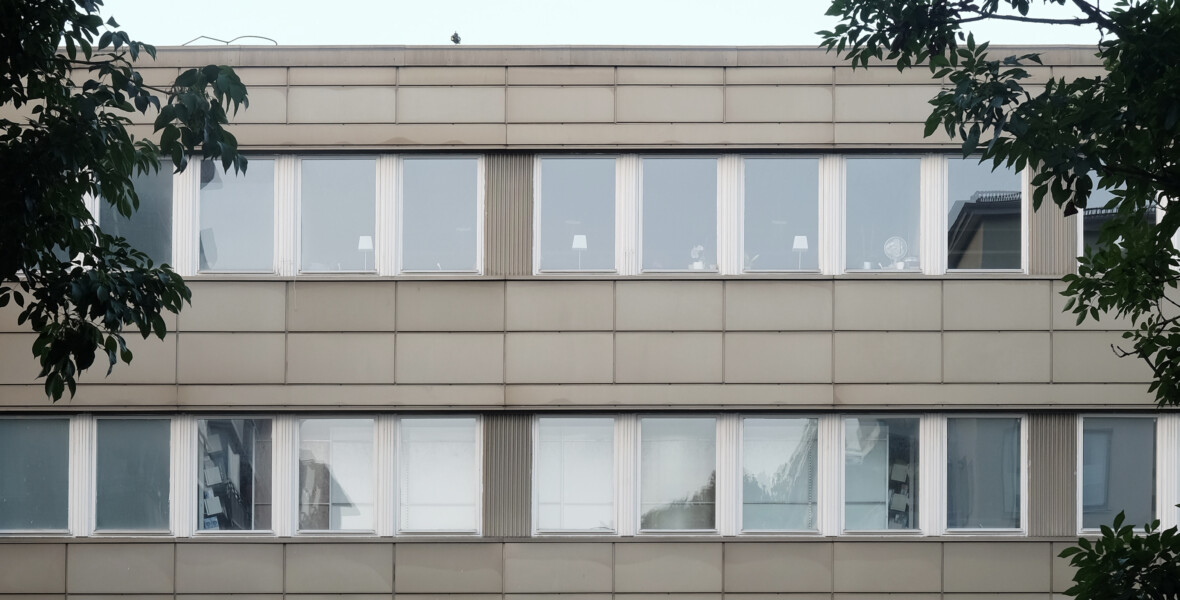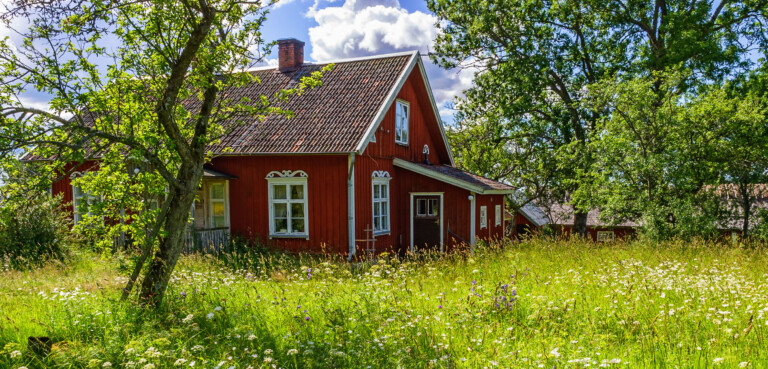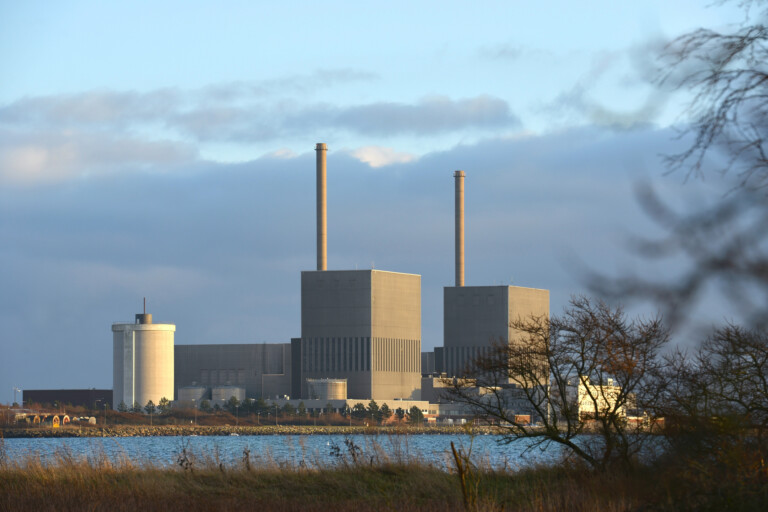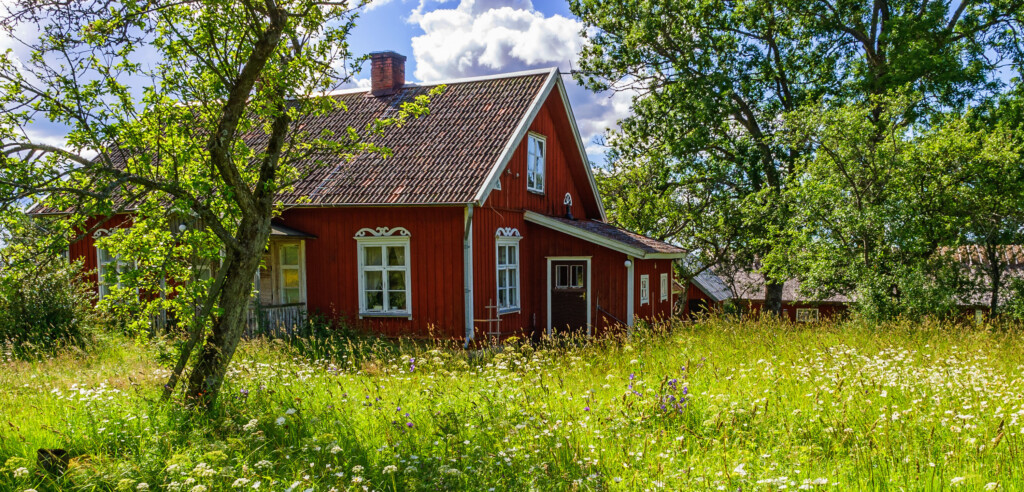Transport
“Unreasonable to demolish and start from scratch”

“Impractical”, “in the way” and downright “ugly”. This is the perception of the old office buildings in many places where new neighbourhoods are emerging. Choosing to demolish the entire complex is an obvious alternative, but now voices are being raised in defence of these buildings.
Prenumerera på Extrakts nyhetsbrev!
Läs mer
Håll dig uppdaterad! Få kunskapen, idéerna och de nya lösningarna för ett hållbart samhälle.
Personal data is stored only for the mailing of Extrakt newsletters and information related to Extrakt’s operations. You can cancel the newsletter at any time, which means you will no longer receive any emails from us
Throughout Sweden, there are many areas with old office buildings waiting to be demolished. At the same time, demolition decisions are being challenged more often.
“From a sustainability perspective, it is unreasonable to demolish and rebuild to the extent that we do. We need to become better at using the buildings we have,” says architect Emma Lindberg of Blick Arkitektur.
She and her colleagues Daniel Lindberg and Johan Holkers at Holkers Arkitektur have worked on the project Att återbruka det “fula” (“Reusing the ‘Ugly’”), funded by Riksbyggen Jubilee Fund – the Good City.
In the project, the architects explored how office buildings from the 1960s, 1970s and 1980s could be transformed into blocks of flats. The focus has been on the Örnsberg industrial area in Stockholm, where a new neighbourhood is being built. How to deal with the old office buildings on the site is a highly topical issue, as it is in other new development areas.
In many cases the old office buildings can readily become blocks of flats. So says Kristina Mjörnell, a researcher at Lund University of Technology and business developer at Research Institutes of Sweden, RISE. She has surveyed empty office buildings in Gothenburg and Stockholm. The buildings she identified as relatively easy to convert would provide almost 70,000 square metres of living space, the equivalent of more than 1,200 average two-bedroom flats.
“It is not enough to solve the housing crisis, but it is a start,” she says, adding that many more empty buildings could be converted to residential buildings with more extensive remodelling.
Graduate school on sustainable renovation
At RISE the newly launched graduate school ASSURE (Adaptation of Urban Space through Sustainable Regeneration) is investigating how to sustainably renovate and convert Sweden’s existing building stock.
Several doctoral projects are underway, including one that will focus on the conversion of office buildings into residential buildings.
Kristina Mjörnell believes that greater awareness could help many of the empty office buildings be converted — but not all.
“We need to carefully consider whether it makes sense to convert the buildings and when it becomes too complicated. We have slightly different requirements for residential buildings compared to offices, such as for ventilation, sound insulation, the lighting environment and accessibility,” she says.
Changing working life
Mjörnell believes many older office buildings remain empty because of changes in working life. With more open-plan offices and more people working from home, companies no longer need large spaces, and many have moved to smaller premises in newly built office complexes in city centres.
The office buildings at risk of demolition are typically large and deep, with little light in the centre. The buildings also generally have low ceilings and only a few storeys. Lindberg notes that they are neither old enough to be considered of cultural and historical value nor new enough to feel modern.
“They are a type of building that most people just walk past. You do not think about them. And when they are demolished, nobody really remembers what was there.”
Clashing with new ideals
In converting office buildings to residences, poor light penetration is a particular challenge. One solution is to build flats so small that having windows in only one direction does not matter. Another solution involves opening up the centre of the building and creating a courtyard.
“This does not work with all designs, but it can in some buildings,” says Emma Lindberg.
Another factor that can make redevelopment difficult is the shape of large office buildings. They do not conform with the ideals guiding the design of new neighbourhoods.
“It is very popular to build in traditional urban patterns, and it is difficult to include these existing buildings in such plans.”
She describes the need for a change of perspective in the planning of new neighbourhoods.
“Rather than starting with a blank slate, we need to look at what is already there, and plan new districts based on that.”
Doubtful property owners
In the Ömsberg industrial area, the architects have noted an increased interest in the old office buildings. In the most recent consultation, politicians encouraged property owners to consider preserving more buildings. Among property owners, there seems to be a growing interest in preservation but also hesitation.
“People associate redevelopment projects with risks. Simply investigating the status of a building can be a big project. You run the risk of investing a lot of resources only to find out that the property is not suitable for remodelling,” says Lindberg.
She adds that the financial calculations of property owners often show it is more profitable to demolish and build new than to renovate, but she does not believe this will be the case in the long term.
“It is more difficult to estimate the costs of remodelling projects than new construction, partly because we have more experience with new construction. The more we learn, the cheaper it will be. I think we have to reach a tipping point eventually, when it becomes cheaper to renovate.”
Hard-to-sell flats?
In addition to the risk of unforeseen costs, the architects behind the Reusing the “Ugly” project note that property owners are also reluctant to convert office buildings because they fear that the buildings will not be perceived as attractive: Who wants to live in an old, dilapidated office building?
“There is concern that the new flats will not be sold, and we are a little surprised by that. We think it is obvious that people will want to live in these remodelling projects,” says Emma Lindberg.
She adds that perceptions of what is “nice” and “ugly” also vary over time.
“This should be considered an additional argument in favour of preserving these buildings, along with the environmental and climate aspects. Today these buildings are not considered to have historical value, but in the future people might have a different opinion.”








